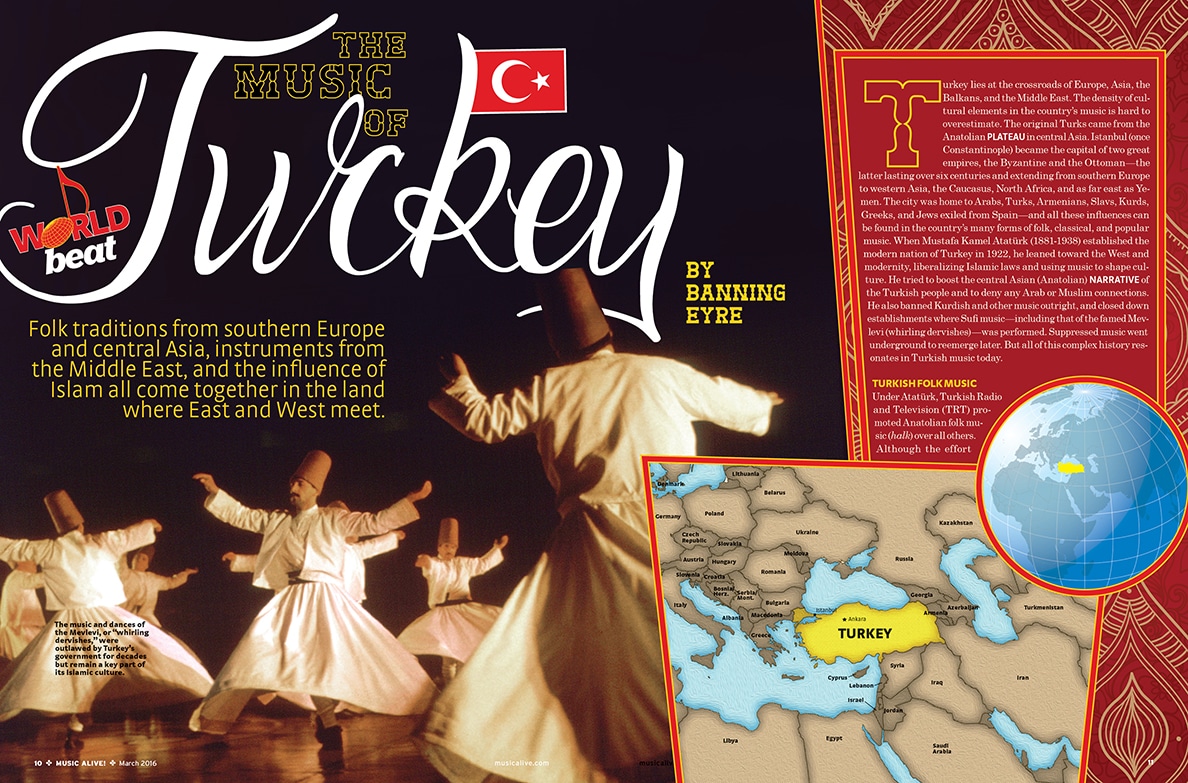The land where East meets West has been a cultural crossroads for centuries, and you can hear that immediately in the dazzling diversity of Turkey’s music.
Even with a full feature article in our March 2016 issue and a respectable complement of tracks in our Hear the Music and Extended Play sections, we’ve barely scratched the surface of this history-laden country’s sounds and styles. So here are a few video examples to give a somewhat wider picture. First is singer Belkis Akkale, performing on the national TV network TRT and backed by an assortment of traditional Turkish instruments, including the saz and the oud.
Next, a master of the Turkish ney flute, Kudsi Erguner. The ney, which is made from a hollow reed—you’ll see Erguner cutting and sorting through reeds for possible use in this clip—is one of the world’s oldest musical instruments, with records of its use going back at least 5,000 years. Watch how Erguner’s fingers slide gently over the holes to produce varying tones.
To see and hear how Turkish folk music sensibilities adapt to the use of traditional Western instruments, check out this live performance by the band Nim Sofyan. You’ll notice that the rhythm is a little tricky—each measure is counted out in seven beats per measure rather than the more standard four or three.
Finally, a little more about the Mevlevi order of Sufi Muslims, better known to the world as “whirling dervishes.” This UNESCO video explains the basics of their practice.
And here are some clips from an actual Istanbul sema, which is what the Mevlevi call their dancing ceremonies. The ayin music for a sema, which is divided into four sections, is generally handled by at least four musicians: one singer, a ney flutist, a drummer, and a cymbal player. Much of the music in the ayin repertoire dates back as far as the mid-16th century.
https://www.youtube.com/watch?v=luDklth_mbM


